
A little Egyptian boy

The following post is dedicated mostly to ancient depictions interpreted as images of children; nonetheless, most of the illustrating material is suitable rather for adult Readers.
As it happens, ancient Egyptians venerated some child deities – or rather particular gods when they were children. Christian cult of Infant Jesus is nothing new, really; in fact, it is assumed that medieval depictions of Maria Lactans (i.e. Madonna nursing Baby Jesus) are rooted in the images of Isis nursing Horus.
Horus (son of Isis and Osiris) was one of the most important Egyptian deities, a god of sky, Sun and moon. He was also venerated as a child, personifying “young” Sun, that is: the Sun at sunrise.
Depiction of children in ancient Egyptian art are very characteristic: a child was naked (adults were depicted as dressed), with specific “sidelock of youth” in their hair (or rather a side-braid, deriving from images of young Horus), and with a finger touching their lips. That gesture was rooted in a hieroglyphic sign for “a child”: a human figure with hand reaching towards mouth: ![]() It is possible that this was created as some reference to an infant sucking on their thumb.
It is possible that this was created as some reference to an infant sucking on their thumb.
Those elements let us identify certain images as depictions of children, even if proportions of the figures do not indicate so. A very interesting example is a sculpture in Brooklyn Museum: a portrait of Nykara and his family (wife and son), dating back to between ca. 2455 and 2350 B.C.E. Nykara was an inspector of the scribes of the granary, and his wife was related to royal family. Keeping the symmetry of the composition was clearly more important than keeping proportions correct; the boy’s figure is of the same size as the wife’s, while they are both much smaller than seated Nykara. Ultimate goal was to keep all three heads (of standing and sitting people) on the same level. But the fact that the son is a child is clear because of the aforementioned elements (nakedness, sidelock of hair, finger on the lips).
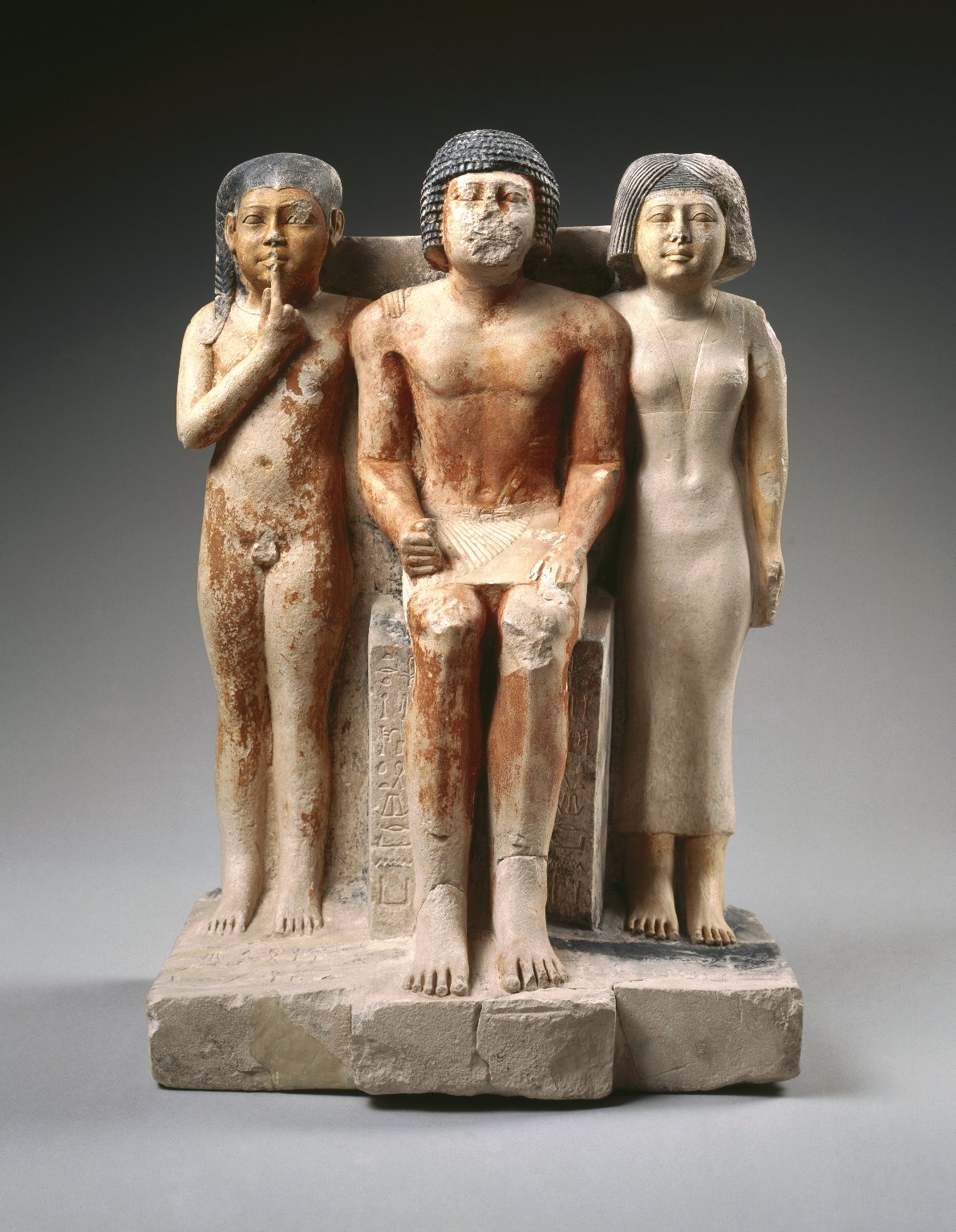
Statue of Nykara and his Family, ca. 2455-2350 B.C.E. Brooklyn Museum, https://www.brooklynmuseum.org/opencollection/objects/3544
In time, Egypt became a part of the Roman Empire, and Egyptian deities started functioning in Graeco-Roman culture. Horus-child became known as Harpocrates, and the Romans misinterpreted his characteristic gesture as a symbol of keeping secrets (according to Plutarch, Catullus or Ovid). As a result, in Graeco-Roman culture Harpocrates lost his solar symbolism, and became a personification of silence and discretion.
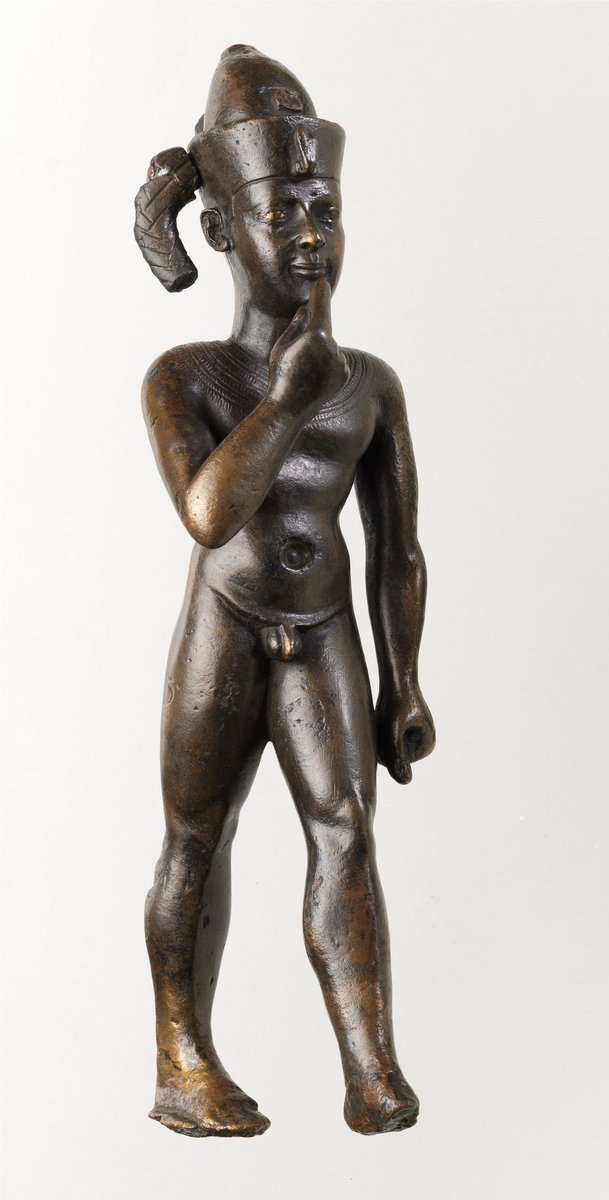
Harpocrates, Egypt, 4th-1st c.B.C.E., Museum of Fine Arts in Budapest, https://www.mfab.hu/artworks/statue-of-harpocrates/
Nonetheless, some of the “young Sun” traits remained in his cult: he was regarded as a patron of youth, fertility and vital powers, and so his image was used in amulets. And here we get a new surprising motif: Harpocrates was depicted with disproportionally big penis. This type of image is called “ithyphallic”.
An example of such a depiction may be a Graeco-Roman terracotta figure of Harpocrates in Gayer-Anderson Museum in Cairo: a boy with a palm touching his mouth, holds a jug for water or wine (both those fluids may refer to fertility and abundance). The size of the boy’s penis is emphasised by the fact that his legs are disproportionally short.
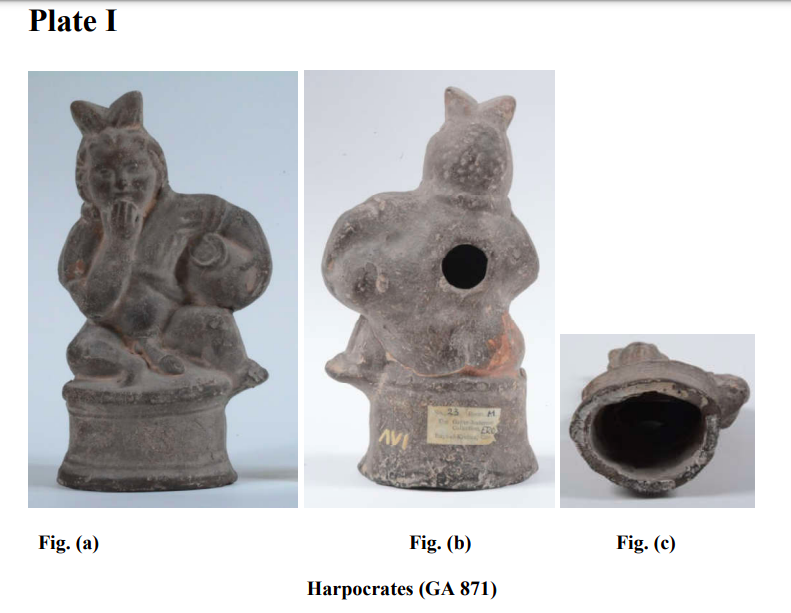
Harpocrates in Gayer-Anderson Museum in Cairo, GA 871, fot. Sameh Abdel-Mohsen, after: Noha Shalaby, “Graeco-Roman Fertility Figurines from Gayer-Anderson Museum, Cairo”, in: “International Academic Journal of Faculty of Tourism and Hotel Management” (IAJFTH) Volume 5, Issue 1, 2019, plate I, s. 68
It is difficult to say whether it is entirely right, but the scholars tend to interpret other ithyphallic figures as depictions of Harpocrates as well. Some very interesting examples may be found in the collection of the British Museum, as British archeologists ran excavations in Egypt already in the 19th century, and Egyptian “antiquities” were very popular among English collectors. Unfortunately, many of those terracotta figures have not survived in a good condition. Today some of them are described in museums’ databases as “probably Harpocrates”. Some of them have absurdly oversized penises.
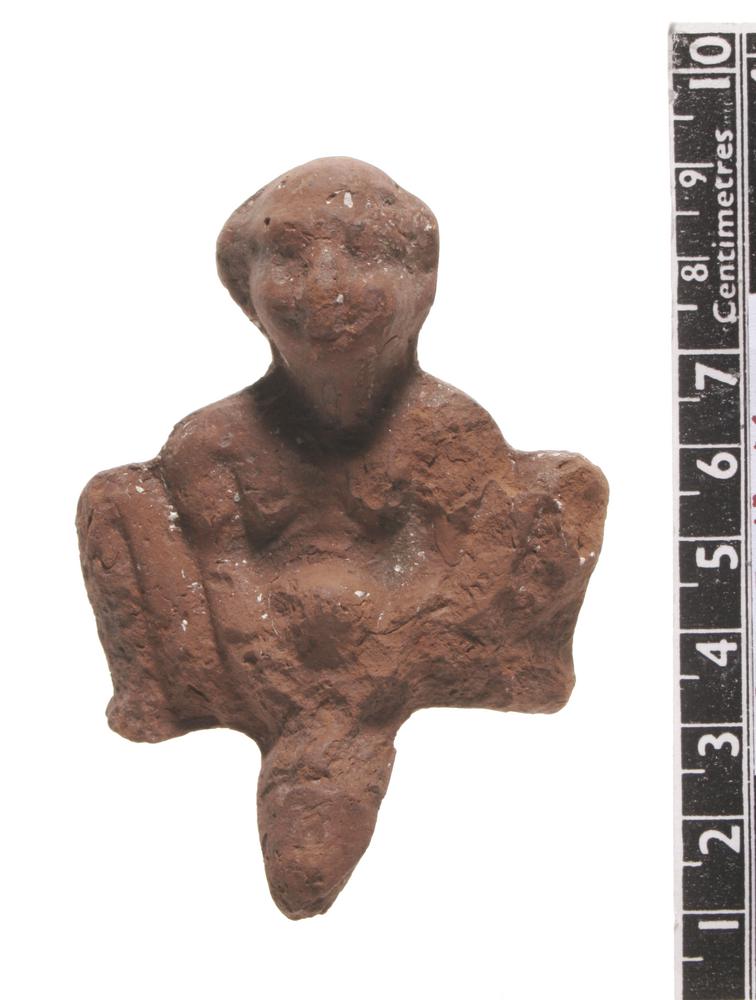
Harpocrates?, Coptos, 2/1 c. B.C.E., British Museum in London, 1837,0717.164 https://www.britishmuseum.org/collection/object/G_1837-0717-164
In some cases phallus is bigger than the god himself!
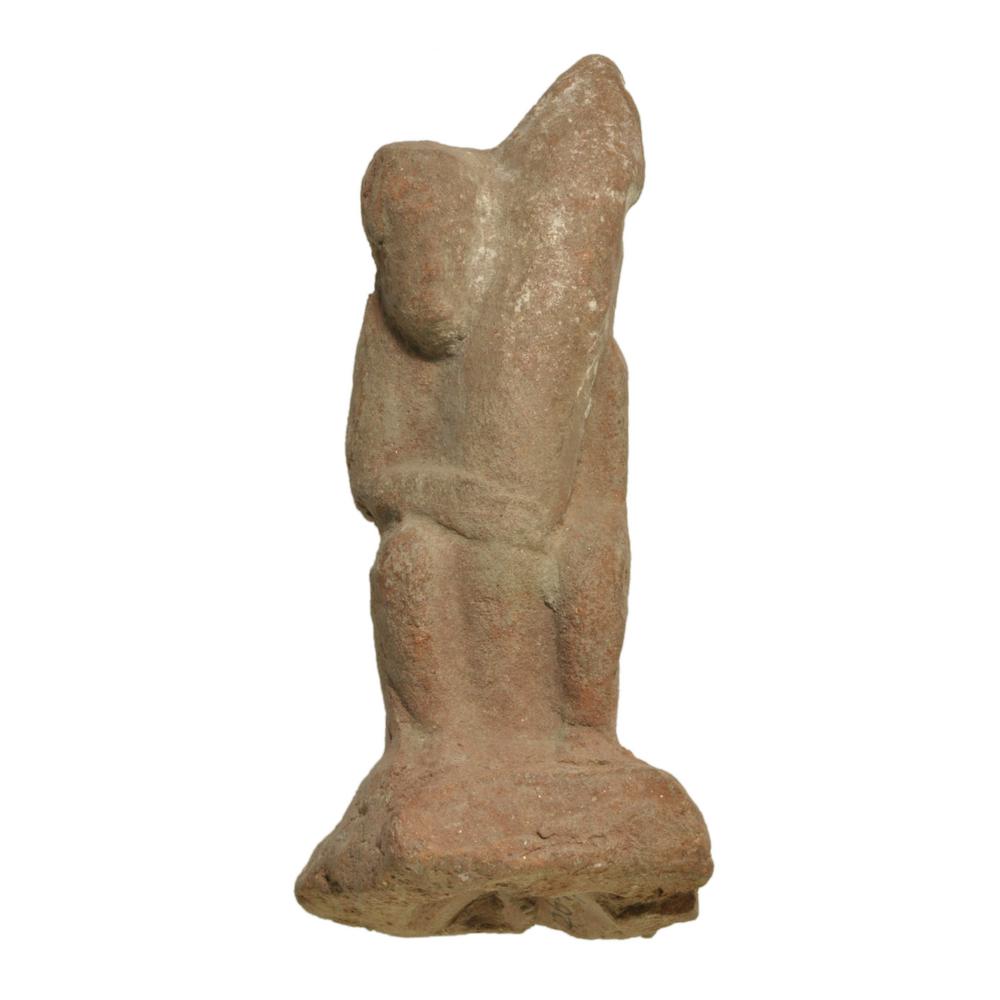
Harpocrates?, Naukratis, 600-330 B.C.E., British Museum in London, E.126.1914 https://www.britishmuseum.org/collection/object/X__2498
And sometimes it even wraps around his shoulders:
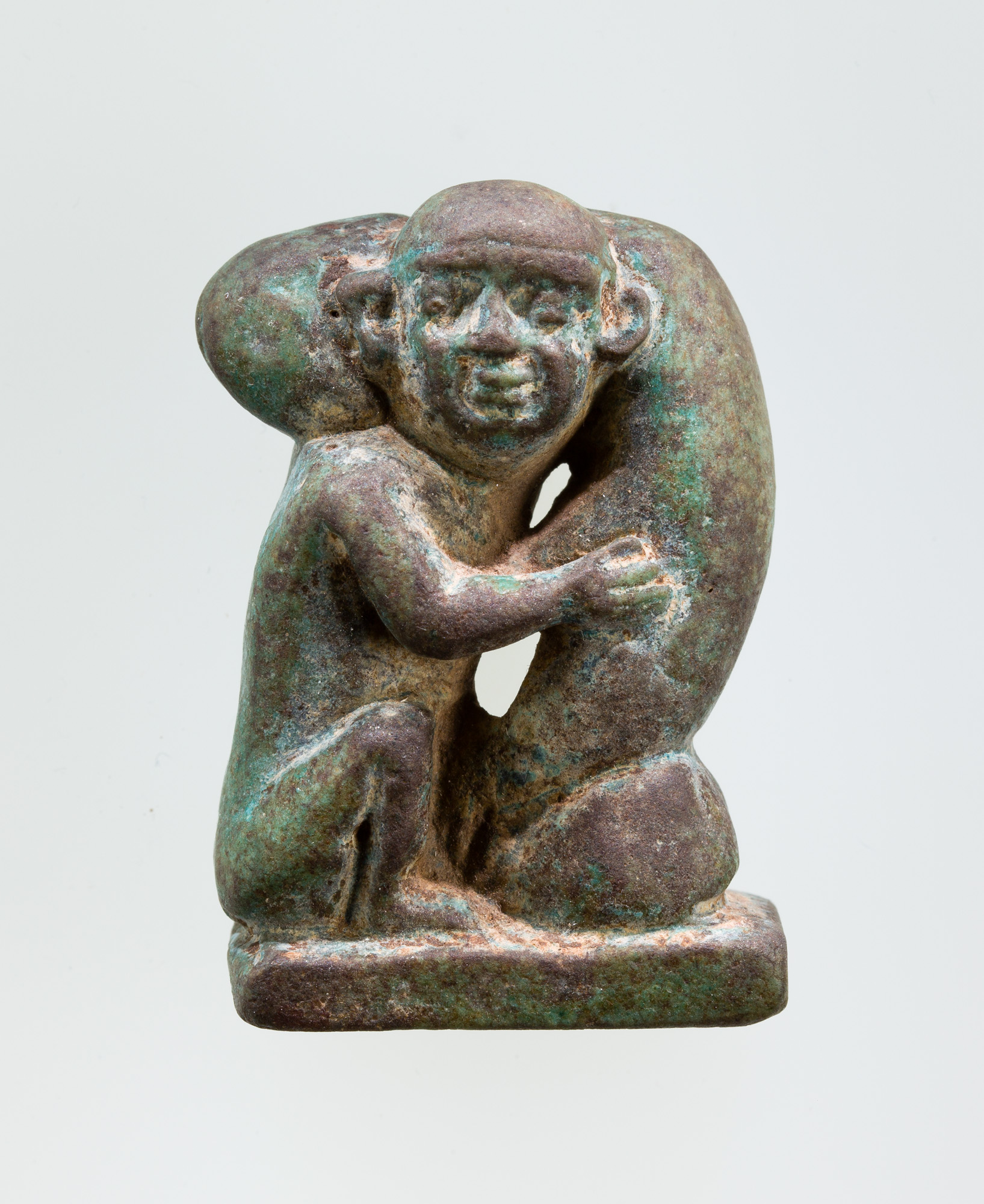
Harpocrates?, Egypt, 600-300 B.C.E., The Metropolitan Museum of Art in New York, https://www.metmuseum.org/art/collection/search/552336
Ithyphallic amulets were in general popular in Roman culture – it was believed that they had apotropaic powers (i.e. they could repel evil). Plutarch suggested that indecent images could attract (and distract) the Evil Eye: the look that could have brought misfortune (also mentioned by Theocritus and Pliny, as well as Socrates and Plato). It is no surprise then that the phallic motifs repeatedly occurred in decorations of both private and public spaces. In ancient Rome even little children carried phallic-shaped amulets; after all, every parent wanted to protect their kids from the Evil Eye.
But is it really correct to interpret all those figures as the images of Harpocrates? Most of them lack characteristic gesture of touching their mouth. Disproportionally short legs or large head didn’t have to indicate that the figure was a child – it could also had been an adult with dwarfism. Dwarven deities in ancient Egypt could also had been depicted as exposing their genitals. For example, take Pataikos: according to Herodotus, his name meant “little Ptah”, and it referred to this important god (Ptah) depicted as a dwarf. In spite of his diminutive stature, Pataikos was a strong protector against natural disasters; that, however, is probably a subject for another post on this blog.
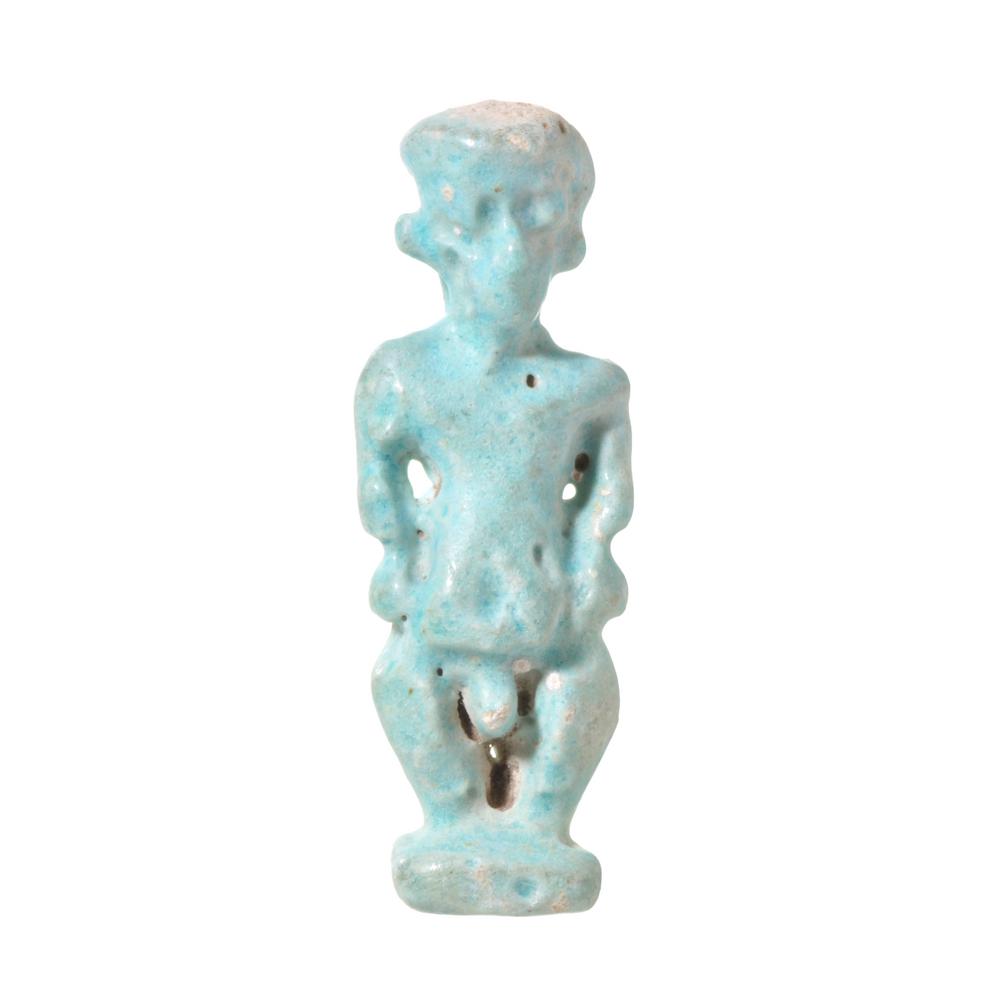
Amulet (Pataikos), Egypt, 6th c. B.C.E., British Museum in London, 1987.288 https://www.britishmuseum.org/collection/object/X__6652
And for the end of this post, have a look at one more “probably Harpocrates”. Penis that big looks like a curse: not only it wraps around his shoulder like some collar, but looks like it suffocates him. On the other hand, this guy can easily hug himself – perhaps that is an advantage after all? He probably never felt lonely.
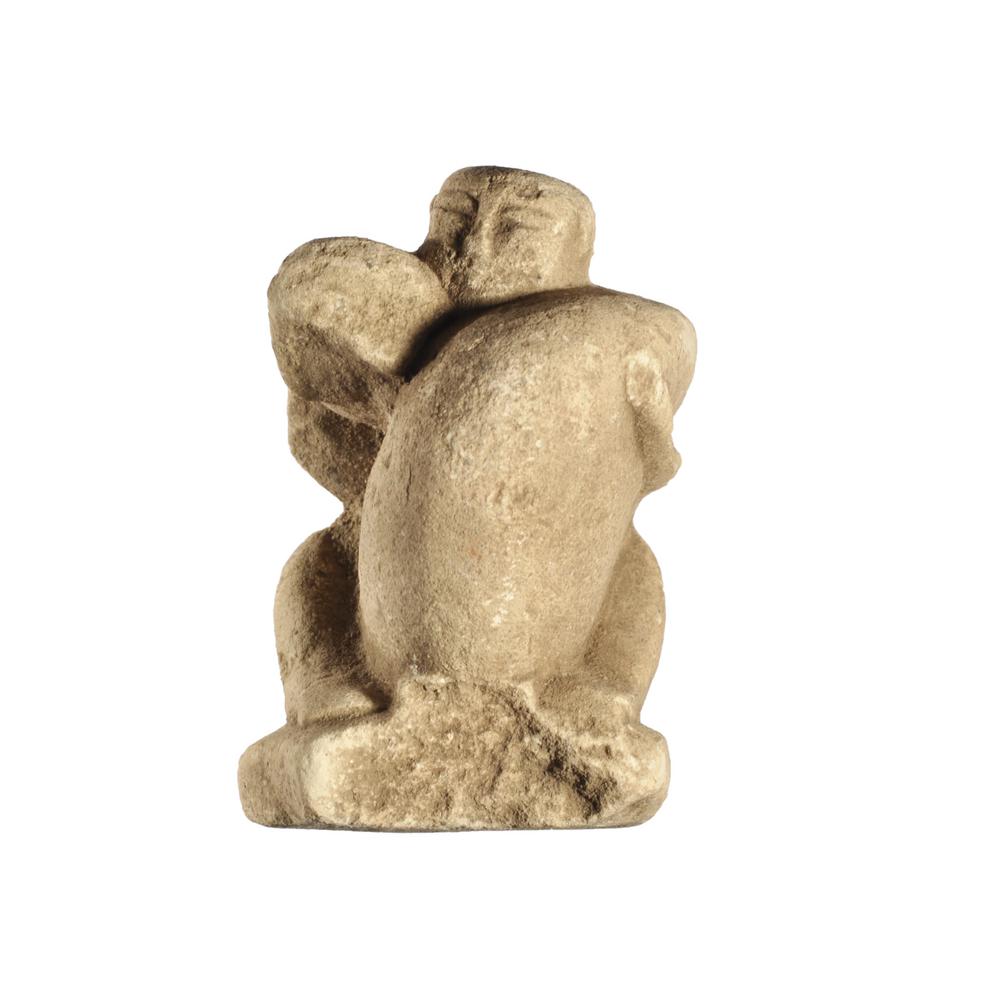
Harpocrates?, Naukratis, 600-400 B.C.E., British Museum in London, https://www.britishmuseum.org/collection/object/Y_EA90337





Yet another delightful post. Thank you.